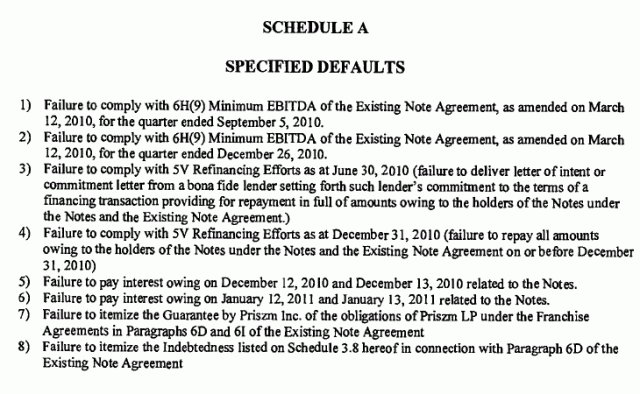When a company rolls over its debt and extends the maturity, a call on the previous debt is not too far away. Equal Energy (TSX: EQU.TO) announced a bought deal for $45 million in face value of debentures, with a 6.75% coupon, maturing in just over five years (March 31, 2016) and a conversion premium of approximately 40% over common share price ($9/share).
They have two debenture issues on the marketplace, $80M maturing December 31, 2011 (TSX: EQU.DB) and $40M maturing June 30, 2012 (TSX: EQU.DB.A). Both of these have a conversion price well over the price of the common shares.
Most importantly for existing holders is the current phrase in the press release:
Proceeds from the offering will be used to retire a portion of the 8.00% convertible unsecured subordinated debentures due December 31, 2011 (the “8.00% Debentures”). Equal intends to call the 8.00% Debentures for redemption as soon as practical. The Company intends to fund the balance of the redemption cost of the 8.00% Debentures from its operating bank line.
…
Closing of the offering is expected to occur on or about February 9, 2011. The offering is subject to receipt of normal regulatory approvals, including approval of the TSX.
The company has been clearing away its debt at a fairly rapid pace over the past couple years and has sufficient room in its line of credit to pay off the debentures (currently $115M of room at a relatively low rate of interest). It is likely to assume that December 2011 debenture holders can expect a call by around mid February of the year. They will receive 102.5 for the debt. Investors paying this amount would receive interest at a minimum or about a 5% YTM, while investors paying less than 102.5 will receive a higher short term reward assuming a call. There would be a minimum of 30 days notice for a call and a maximum of 60 days.
The June 2012 debentures are a little more complicated – on July 1, 2011 they can be redeemed for 102.5 cents on the dollar, and 105 cents on the dollar before. So management will likely redeem these on July 1, 2011.
I own the December 2011 debentures, purchased during the economic crisis in 2009 at a price that made me wish I bought more of them compared to alternatives at the time. I am also finding it difficult to reinvest this capital in other ventures with similar risk-reward profiles.


